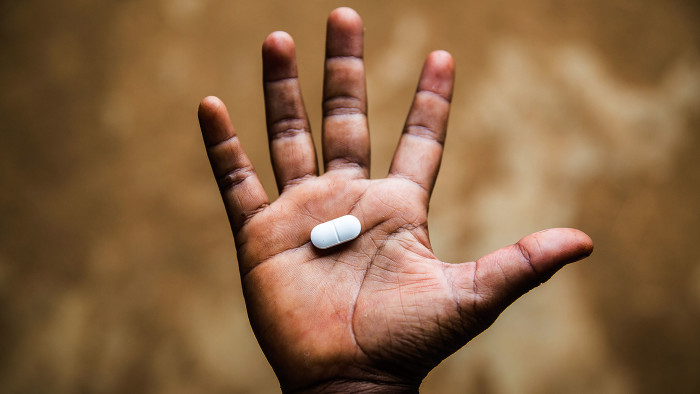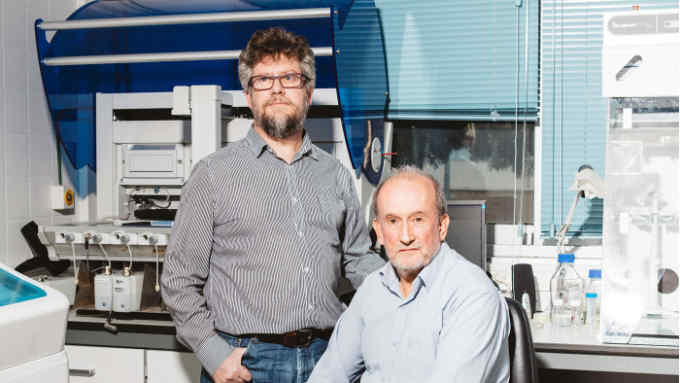More engagement on neglected tropical diseases needed from drugmakers

Roula Khalaf, Editor of the FT, selects her favourite stories in this weekly newsletter.
In 2012, the London Declaration on neglected tropical diseases targeted 10 of the 17 diseases then prioritised by the World Health Organisation. The hope among the drugmakers, government agencies and aid groups that signed the declaration was that these diseases would be classed as “under control” by 2020, with lymphatic filariasis, blinding trachoma, leprosy and sleeping sickness eliminated as public health problems and guinea worm disease eradicated.
But while the signatories pledged more than 5bn drug doses and nearly $18bn, finding the resources to develop new diagnostic tools and treatments has proved difficult. Some fear the goals will probably not be met.
Médecins Sans Frontières, the medical relief organisation, said last year “significant gaps” in the availability of drugs had resulted in “preventable” deaths in as many as 60 countries. “The predominant model of the pharma industry does not incentivise them to pour resources into the development of new drugs for neglected diseases, so an adaptation of the model is required,” says Julien Potet, a policy adviser on NTDs and vaccines at MSF in Paris.
The problems are manifold: commercial pressures on drugmakers continue to limit the amount of money they are prepared to devote to tackling tropical diseases. Campaigners say more could also be done to share resources, expertise and, crucially, intellectual property to spur the development of new treatments.
Where pharma companies have been reluctant to invest in the development of new treatments, public and philanthropic donors have stepped in to “de-risk” the often large upfront costs of developing and testing drugs. The Drugs for Neglected Diseases Initiative (DNDI), which MSF helped to establish in 2003 to drive research and development in the sector, is one example.
Potet questions the $1bn average price tag the industry attaches to developing a new treatment. He says the DNDI has brought six new treatments to the market at a cost of about $200m, to treat Chagas disease and sleeping sickness among others. The DNDI plans to deliver as many as 18 new treatments by 2023 for €650m, he says, as it attempts to encourage companies to open up their intellectual property libraries so that secret drug molecule structures can be shared without being revealed to competitors.
Serge Sagodira, the DNDI’s director of business development, says developing treatments for neglected tropical diseases requires this collaboration in way that is not needed for other diseases. “Working on parasites is not the same as working on oncology or diabetes,” he says. “When you start the discovery programme you don’t have the same chance of success, so you need to increase your efforts by tapping into pharma companies’ libraries.”
Mapping the areas where a disease is prevalent and developing cheap, innovative diagnostic tools has been another challenge, says Larry Slutsker, who leads the malaria and neglected tropical diseases programmes at Path, a US-based non-profit organisation.
He predicts “some potential big successes in the next five to 10 years” and “game-changing” breakthroughs that may be one or two years away to block the transmission of lymphatic filariasis, for example. By adding one more drug to the treatment, he says, “it looks like you can dramatically shorten the time from transmission to interruption”. Similarly, diagnosis work on sleeping sickness has seen progress thanks to funding from the Bill & Melinda Gates Foundation and could be eliminated within five years, Slutsker says.
Prospects for other diseases are less positive. Onchocerciasis, or river blindness, will continue to afflict Africa, he says, while soil-transmitted helminthiases and schistosomiasis (or snail fever) will remain prevalent given that they are worsened by poor sanitation, which remains a problem both in the developing world and in poor communities in richer nations.
For all the difficulties, Jayasree Iyer, who heads the Access to Medicine Foundation in the Netherlands, says she has seen examples of positive engagement by pharma companies in recent years, such as AbbVie. Others, including Astellas Pharma, together with TI Pharma, Merck and the Swiss Tropical and Public Health Institute, have refined their treatments for diseases such as schistosomiasis. In 2014, Bayer granted permission for the DNDI to use its active ingredient emodepside to develop an oral drug to treat onchocerciasis.
Generic drugmakers also have a role to play in making off-patent, high-quality treatments available to poor countries at more affordable prices. Sandoz, the generics arm of Switzerland’s Novartis, aims to get its treatments to 1bn people over the next few years, almost doubling its reach since 2016. But, notes chief executive Richard Francis: “[Efforts have] to be sustainable. We don’t go into a population with a treatment and then say we can’t really afford this. I’d rather not go in.”
This article has been amended. A previous version stated that the non-profit organisation Path is based in California.

Comments